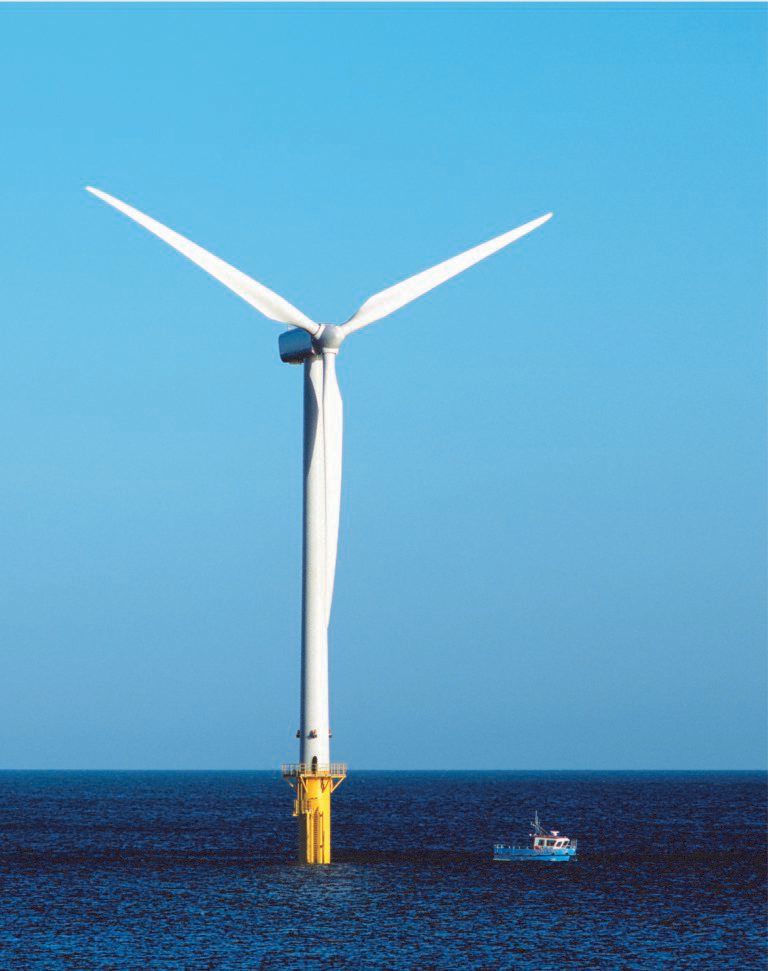October 20, 2020
DEP : It’s 2010, Testing the Waters for Offshore Wind Energy Development
The winds of change were blowing strongly in 2010.

On Jan. 27, Apple introduced the first iPad. The tablet – bigger than a cellphone, but smaller than a computer – was described by Apple as “a revolutionary device for browsing the web, reading and sending email, enjoying photos, watching videos, listening to music, playing games, reading e-books and much more.”
It would be available in two versions: one with Wi-Fi, and the other with both Wi-Fi and 3G. (How far we’ve come – in September, Apple introduced the eighth-generation iPad with a “A12 Bionic chip.”)
The 2010 iPad was priced from $499 to $829 in the United States (the latest iPad starts at just $329!) and consumer reaction initially was mixed. However, Apple sold 1 million iPads in a month – faster than the iPhone reached that milestone.

The big yellow taxi got a dose of competition when Uber went live in June 2010 in San Francisco. In big cities and small towns, commuters were used to hailing a cab right on the street or, sometimes, calling for one – Uber gave them an app on their smartphones for summoning a ride.
Within 18 months, Uber had spread across the United States and, in June 2012, competition of its own came calling with the debut of Lyft. Uber has since expanded its services to include UberEATS, a food delivery service. Though Uber has had its share of controversy, the platform has changed how people travel and has become a mainstay in the so-called “gig economy.”
Professional athletes often make headlines, but one basketball player’s actions were so big that he got his own live television special on July 8, 2010, to announce “The Decision.”
For months, speculation was rampant as to whether superstar LeBron James would stay with his hometown team, the Cleveland Cavaliers, or move on. James, a native of Akron, Ohio, had played seven seasons in Cleveland.
On that July night, ESPN brought James and announcer Jim Gray to the Boys and Girls Club of Greenwich, Connecticut, for the reveal of the superstar’s decision. About 30 minutes into the live program (which raised about $2.5 million for the charity), James announced that he would be signing with the Miami Heat for the 2010-11 season. Cleveland fans were outraged – some even burned his jersey.
After winning two championships in four years with the Heat, James returned to the Cavaliers in 2014 and helped them win a championship in 2016. Just two years later, he joined the Los Angeles Lakers, a move that did not engender the same anger as the first departure. (If anyone’s counting, James just earned his fourth championship ring when the Lakers won the NBA finals on Oct. 11.)

Preserving memories for the longest time fell to our trusty cameras. Then, the smartphone came along and brought us a camera app. Suddenly, we all became photographers.
Now, we wanted to share all of those selfies, plus snaps of great meals we were eating and goofy pics of our pets. So a couple of smart guys came up with Instagram.
The photo and video sharing social networking service was created by Kevin Systrom and Mike Krieger (it’s presently owned by Facebook), and was launched in October 2010. There are filters, frames and even a real-time story feature. One of the most famous selfies shared on Instagram was a shot taken by Ellen DeGeneres in 2014 at the Oscars, which captured several famous faces including Bradley Cooper, Jennifer Lawrence, Meryl Streep, Julia Roberts, Brad Pitt, Lupita Nyong’O and Angelina Jolie.
The breezes were blowing over New Jersey that year, too.
And now, a look at 2010 …
In 2010, the Offshore Wind Economic Development Act was signed into law. It directed the state to incentivize the development of offshore wind energy in New Jersey by providing tax credits for related businesses and establishing an offshore wind renewable energy certificate (OREC) program.

That year, the urgency of charting a new path away from fossil fuels was starkly illustrated by the Deepwater Horizon disaster, which killed 11 people in the initial offshore oil rig explosion on April 20. The blowout spewed an estimated 134 to 206 million gallons of oil into the Gulf of Mexico before the damaged well – situated 4,993 feet below the surface on the seabed – could finally be sealed. It created an oil slick in the Gulf that, by some estimates, extended more than 57,000 square miles – six times the size of New Jersey – killed hundreds of thousands of marine animals and birds, and fouled shorelines from Texas to Florida.
New Jersey signed an agreement with other East Coast states to promote offshore wind. In doing so, the state recognized that the environmental tragedy in the Gulf “dramatically demonstrates the need to create safe and reliable ways to produce, distribute and use energy.”
In 2010, the DEP also released the results of a two-year research project to characterize the distribution and movement patterns of marine wildlife and birds off the Jersey coast. The study would be instrumental for evaluating potential impacts of offshore wind development and identifying suitable areas for turbine placement.
“This is a groundbreaking study,” said Dr. Gary Buchanan, manager of DEP’s Office of Science. “New Jersey is the first state to take such a detailed scientific look at its offshore ecological resources in the context of wind energy.”
###
 OFFICIAL SITE OF THE STATE OF NEW JERSEY
OFFICIAL SITE OF THE STATE OF NEW JERSEY